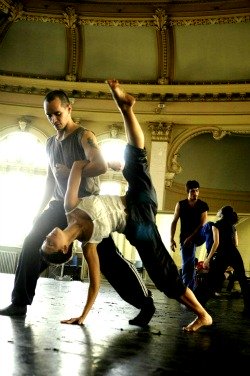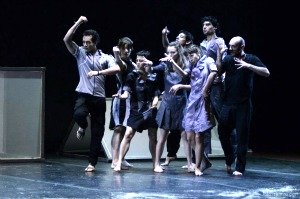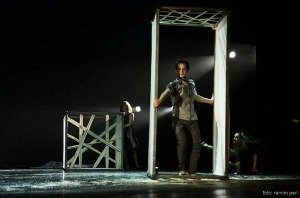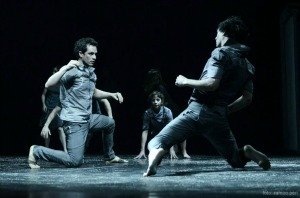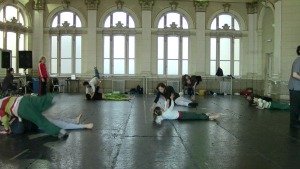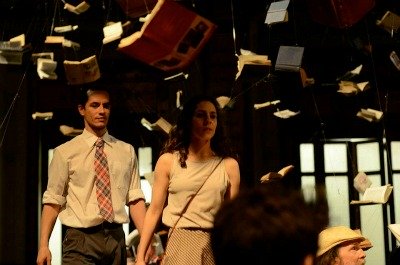| Back to Back Issues Page | |||
 |
|||
|
The N.C. Dance Company of Argentina, The Dance Thinker, Issue #23 February 05, 2013 |
|||
The Dance Thinker Issue # 23, FEBRUARY 5, 2013
https://www.contemporary-dance.org/The_Dance_Thinker-national-contemporary-dance-company-of-argentina.html
We have: - A page for contemporary dance announcements in which you can post your news about workshops, auditions, performances, meetings or any current, related items. - A contemporary dance blog where you can find current information and that will automatically distribute what you post in the announcements page to facebook, twitter and all subscribers to the site’s RSS feed. - A worldwide contemporary dance directory of schools, companies, scholarships and related websites to which you can also submit your contact information. - A forum for asking dance questions. - Several pages in which you can participate with contributions like articles, reviews, questions, comments or even ratings. - An archive for THE DANCE THINKER back issues, where you can always revisit precedent issues from our e-zine. - A contact page through which you can address to me directly if you have questions, ideas, wishes, suggestions or comments.
News
You may have noticed that I hadn’t sent you ‘The Dance Thinker’ (our e-zine) for a while. The reason is that I’ve been busy with a lot of offline work (dancing!) and I was forced to slow down the activity at contemporary-dance.org. Nevertheless, the website continues to be very active: there are new posts at our blog all the time, announcements, new chats at the forum and so forth. I will also continue to share great interviews and useful articles occasionally, through ‘The Dance Thinker’. I’ll go slower but I know you understand that it’s important for me to go dancing… ; - ). The more I dance, the better I’ll write…? Anyway, I hope you enjoy this issue!
“Before the end of the year there was this teacher that asked what dance for us is. I said that it is like an uncertain path that you can not grasp. Being in the company is like that constant discovery of the responsibility, the discipline, the tiredness, the will, the possibility, the applause, the growing, the relationship to the other…; that daily construction that goes beyond movement, dance or language. I can not grasp dance. For me dance is a path and being in the company has allowed me to go over it.”
Juan Guillermo Velásquez is a Colombian dancer who recently joined the permanent staff of the National Contemporary Dance Company (CNDC) of Argentina. A few days ago I was lucky to come across him and we had a chat about his experience in Buenos Aires and the work at the CNDC. I must say that I was amazed to hear about the great working conditions this company has, considering that they are based in South America. Amazingly, the CNDC of Argentina manages to survive within a governmental frame (which is not so usual among contemporary dance artists) and offers its members a great quality of life. Juan Guillermo also told me things about the company’s history, working style, daily routines and let me know that the CNDC is open to choreographers that want to propose their choreographic projects… Just read forward if it sounds interesting to you… :
Juan Guillermo Velásquez: I had already been studying in Buenos Aires for two years at the IUNA (Instituto Universitario Nacional del Arte). That’s the reason why I moved to Buenos Aires at first. At the time I finished the courses, I had already been training for two years with Eugenia Estévez too. During that period I met the CNDC, which is a state-owned Dance Company of a collegiate coordination character. CDO: What does collegiate coordination mean? JGV: It means that the founders decided not to have a vertical structure with ‘director’, ‘vice-director’, ‘coordinator’, ‘assistants’ and so forth, but the six of them are responsible for the direction. Decisions are made collectively. To enter the company, I made an audition and they chose me. That was it. CDO: Was it a coincidence that they opened auditions right when you finished your course at the IUNA? JGV: Initially I asked to take classes with them and they accepted me with a grant for about twenty days. Three months after that they opened the call. They needed three boys and two girls. CDO: Was it for a specific project or for recruiting permanent staff? JGV: First it was to substitute some dancers that were disabled to dance for a while. They engaged us with a defined term contract. We had to work on two pieces. But a few weeks ago I signed the contract as permanent staff of the company. CDO: That’s great, so you’re now a salaried employee of the CNDC? JGV: Yes. We have the status of a public servant. Our activity is considered as an artistic service like the one of other organisms like the music band of blind people, the youth chorus, the folkloric ballet and so on. CDO: So, are you financed by the Argentinean state as an enterprise? JGV: Yes. The Argentinean state provides our working place, which is the ancient National Library, with two studios. One is used for taking classes and the other one is used to perform. The state provides the contracts for dancers, two secretaries, a marketing assistant, an executive producer, a complete technical staff. We’re about thirty people.
CDO: You tell me that there’s not one choreographer but that you work in a collective manner. How is that system implemented? JGV: In fact, during the last eight months we were occupied with a strong debate because that modality was proposed at the beginnings of the company by six members only. Being six, it was easy to sustain the collegiate project. Nowadays we’re twenty, so achieving to agree is not so simple. So, in the last eight months, we’ve had meetings with psychologists and specialists of the public services in a search to maintain democracy but with some distribution of roles that helps the making of decisions. CDO: What do you know about the history of the company? JGV: It was founded by six dancers that used to work for Mauricio Wainrot a t the “Ballet Contemporáneo del Teatro San Martín”. They all had injuries at the time and were fired by the ballet. So, they undertook a project together: Pablo Fermani, Ernesto Chacón Oribe, Jack Syzard, Victoria Hidalgo, Bettina Quintá y Wanda Ramirez. They started as a company named “Nuevos Rumbos”. Later on they achieved the national state division for culture to approve their project as a National Contemporary Dance Company (The CNDC) of Argentina, based in Buenos Aires. That occurred in 2008. Since then, the company has been growing and we’re twenty dancers now. CDO: Do you have information about the history of their creative production? JGV: At the beginning they worked a lot with nationalistic topics. You know Argentina has a hard political and social history. CDO: So they made dance with political and social content?
JGV: Yes. That attitude is supported also by the idea of making use of the public wealth in a reciprocal way that produces something for all. Things that have a social character. However, the company has produced pieces like ‘Oda a nosotros mismos’, which is a good piece in my opinion, in which the company starts to have a more universal character. Subjects like ‘movement’ itself, ‘dance’, ‘scenic art’ and so on appear. CDO: What pieces did you have to learn when you joined the company? JGV: Luckily I haven’t had to learn any repertory but I’ve been involved in creative processes like the one of “La Patriótica” which is a poem from Leopoldo Marechal. The director of music and dance in our venue decided to pay homage to the poet, so we made that piece. CDO: It seems that they continue working with a nationalistic tint. JGV: Yes. There’s some political touch that appears in the piece but I believe that the treatment and the language attained takes the piece out of the local conventions. I also worked in the contemporary dance piece “Versus” from Sebastián García Ferro. CDO: Does this choreographer make part of the company too? JGV: NO. Sebastián García Ferro is an Argentinean who lives in Spain now. He uses improvisation and New Dance a lot. For this piece, he was invited to create the piece for the company. If you have a project, you send it to them and it may be accepted for realization. It works that way. Now we’re in the process of another piece entitled “Presentación de invierno” (we think that’s going to be the title but that is a provisional name). This piece is from Emanuel Ludueña who is a young choreographer form Buenos Aires.
CDO: How is the working routine of the company? JGV: We work from 9.30 to 16.30. The first half an hour in the morning we do a technique class: Mondays and Wednesdays may be ballet; Tuesdays and Thursdays something from the contemporary styles, and Fridays we make a three hours workshop of theater, movement, voice, or more experimental training. After the technical class routine we usually have rehearsals or meetings. There’s forty minutes for lunch and then rehearsals again. We may repeat what we created in the morning or put together the different parts of the piece, sound testing, etc. Sometimes we also receive seminars of different techniques, philosophy, etc. CDO: Is that financed by the government as well? JGV: Yes. The company is constantly updating and instructing its members. It presents a budget for each year with the intended pieces, tours, trainings or whatever is planed for the year. That budget is revised and approved by the national division for culture. CDO: Do you receive a good salary? JGV: The Argentinean peso is strongly devaluated, so the salary is affected for international purposes. However, to live in Buenos Aires, the salary is really good. You can have a great quality of life, including all social benefits. It gives you the opportunity to really dedicate yourself to dance. CDO: That’s fantastic. One could say that the Argentinean State supports that there are people dedicated to dance as an art. JGV: Absolutely. We do even have total freedom concerning the creative proposals. CDO: How many pieces has the company created till now? JGV: Including what they did at the very beginnings, I believe it’s around ten pieces. CDO: Do they keep them alive as a repertoire? JGV: Since I’m in the company, I’ve only seen two repertoire pieces alive. They are rehearsed every certain time according to commands, for festivals or special occasions. But it’s not the most common practice, also because the company has been changing a lot. Last year for example, it had five new members and almost the same happened the year before. That makes it difficult to have a fixed repertoire. I also believe that the company is still in the process of settling down before getting there. CDO: What do you think about the working conditions?
JGV: I believe there are very good working conditions. We have a really large studio with constant natural light and air, a good floor for dance, good sound equipments, mirrors if needed, good acoustics, etc. CDO: If you had to summarize your experience at the CNDC, how would you name it? JGV: Before the end of the year there was this teacher that asked what dance for us is? I said that it is like an uncertain path that you can not grasp. Being in the company is like that constant discovery of the responsibility, the discipline,
the tiredness, the will, the possibility, the applause, the growing, the relationship to the other…; that daily construction that goes beyond movement, dance or language. I can not grasp dance. For me dance is a path and being in the company has allowed me to go over it.
If you can not view this message correctly, please copy and paste the following link fully in your browser's address bar:
Remember to feel free to answer this e-mail. Let me know what you think. I’m always opened to comments, suggestions, ideas, wishes...
Editor and Webmaster of contemporary-dance.org
|
|||
| Back to Back Issues Page |
